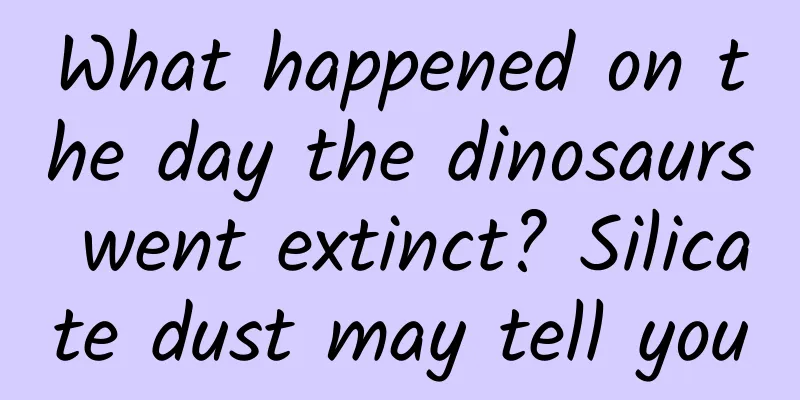What happened on the day the dinosaurs went extinct? Silicate dust may tell you

|
Science Times reporter Wu Tong A climate research paper recently published in Nature Geoscience, a professional academic journal under Springer Nature, believes that the fine silicate dust caused by the rock crushing when the Chicxulub meteorite hit the earth may have played a major role in global climate cooling and the destruction of photosynthesis. These may be one of the main reasons for the extinction of dinosaurs. Dinosaurs are a type of animal that lived between about 240 million and 65 million years ago and could walk upright using their hind limbs to support their bodies. The paper said that the Chicxulub meteorite impact on Earth has long been believed to have triggered a global cold winter 66 million years ago, leading to the extinction of dinosaurs and about 75% of species on Earth. However, there is still controversy over the impact of various debris ejected on the climate, and it is not clear what caused the mass extinction. Past studies have believed that sulfur released by the impact and smoke from wildfires after the impact were the main driving forces for the formation of severe cold, but people did not think that the size of silicate dust particles ejected into the atmosphere was the main factor. To assess the impact of sulfur, soot and silica dust on the climate after the Chicxulub meteorite hit the Earth, the first author and corresponding author of the paper, together with colleagues and collaborators, created a paleoclimate model based on the analysis of fine-grained materials in a well-preserved impact sediment in North Dakota, U.S.A. In their study, they found that the particle size distribution of silicate debris of about 0.8-8.0 microns indicated that the role of fine dust was greater than previously estimated. The authors input the measured particle sizes into a climate model and estimate that such fine dust could have remained in the atmosphere for 15 years after the Chicxulub meteorite hit Earth, causing the Earth's surface to cool by as much as 15°C. They believe that changes in solar radiation caused by the dust could also have stopped photosynthesis for nearly two years after the impact. The authors say the cooling effect of silicate dust, as well as soot and sulfur, would have hampered photosynthesis, allowing the cold to persist long enough to trigger a chain extinction reaction. |
<<: "Old people use 9 keys, young people use 26 keys"? Your typing habits have betrayed you...
>>: When an asteroid strikes, what else can we do except let the Earth wander?
Recommend
Microsoft's push for ARM-based PCs hurts Intel
Reports indicate that Microsoft is testing a Wind...
Popular Science Online | Deciphering the five greatest facts about stem cells: Why are they the source of human life?
The wrinkles that quietly grow at the corners of ...
Tongjiang SEO Training: What kind of external links are considered high-quality external links?
The purpose of publishing external links is to pr...
Netflix CEO says it will launch ad-free paid video service in China
On April 17, according to foreign media reports, ...
A man vomited for more than a year and had a craniotomy to remove parasites. The cause turned out to be this kind of hot pot that everyone eats...
Speaking of bullfrog, it is a favorite on many pe...
Watermark 1.0.0 Watermark Widget
【Software Description】 Watermark is a software th...
The biggest drawback of China's color TV industry is that companies do not have market pricing power
In the first half of 2014, domestic sales of flat...
Juniper: Global smartphone shipments to reach 1.2 billion this year
On September 17, market research firm Juniper Res...
Experience the first version of Android 9.0: Like these 6 changes
A few days ago, Google quietly released the lates...
What new challenges can machine learning bring to 5G communication technology?
Wireless communication now plays an important rol...
Unlock the most in-trend advertising methods on Tencent and iQiyi
Effective attention is the starting point of all ...
[NCTS Summit Review] Peking University Guo Yao: The Current Status and Challenges of the Mobile Application Ecosystem
On October 26, 2019, the second NCTS China Cloud ...
How much does wedding sand painting cost? What is the average price of wedding sand painting?
When it comes to the general price of wedding san...
How can brands come up with new ideas for Spring Festival marketing?
The Spring Festival marketing war is about to beg...
After this barren land was "reborn", it was "affirmed" by the "desert elves"
Recently, the national second-level key protected...





![[Smart Farmers] Rice field farming "Kaleidoscope": It turns out that these aquatic products can be grown in rice fields](/upload/images/67f233e303770.webp)



